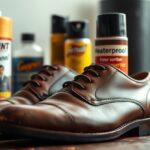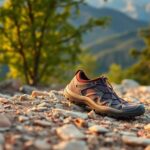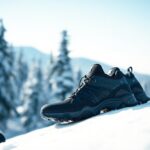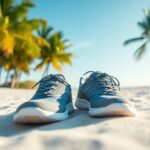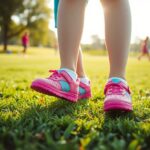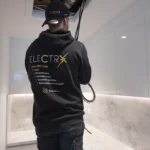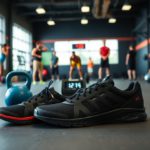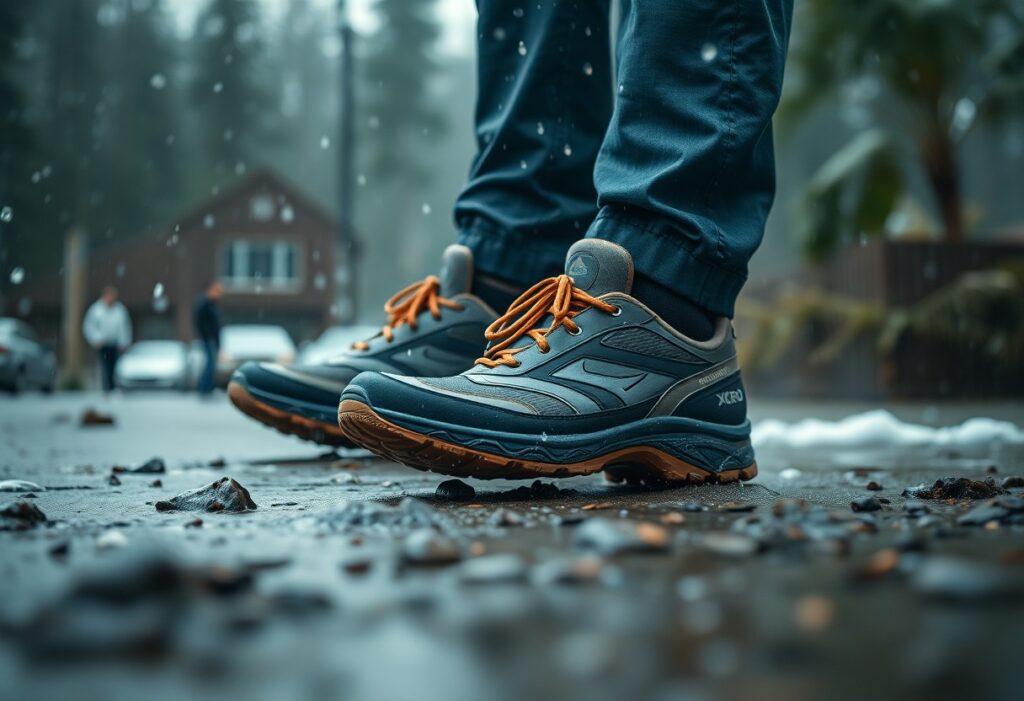
Xero Shoes offer the ultimate flexibility and comfort that are vital for your outdoor escapades, but keeping your feet dry in damp conditions is essential. With a variety of waterproofing techniques available, such as spray-on coatings and heat-activated treatments, you can greatly enhance your footwear’s ability to withstand rain and moisture. Think of waterproofing as similar to applying sunscreen—it necessitates regular reapplication to maintain effectiveness. This detailed guide will unveil the best strategies for achieving optimal weatherproofing for your footwear, ensuring you remain comfortable and agile on every adventure.
Uncovering the Waterproofing Innovations in Xero Shoes
The diverse range of Xero Shoes is thoughtfully crafted to focus on flexibility and ground feel, while incorporating cutting-edge waterproof technology to keep your feet dry in a variety of weather conditions. Many models, including the Denver WP, boast an impressive IPX-7 rating, enabling them to be submerged in water for up to 30 minutes without compromising their performance. This makes them an ideal choice for outdoor enthusiasts who seek both exceptional performance and dependable protection during their adventures.
Examining the Advanced Materials Utilised in Xero Shoes
Utilising innovative material science, Xero Shoes incorporate waterproof membranes and breathable fabrics that significantly enhance your outdoor experience. For example, the Denver WP facilitates efficient moisture evaporation while maintaining substantial water resistance, thus providing practical functionality without sacrificing user comfort. This meticulous design approach guarantees that even during strenuous activities, your feet can remain both dry and comfortable.
The Essential Importance of Waterproofing in Barefoot Shoes
Waterproofing is critical for the performance and functionality of your barefoot shoes. Without adequate waterproofing, you may quickly experience discomfort and limitations in your activities during wet conditions, detracting from the overall enjoyment of your adventures. Acknowledging the significance of waterproofing in barefoot shoes means recognising its essential role in maintaining comfort and performance during unpredictable weather. With an impressive 86% of users reporting dry feet during moderate rain, it is clear that effective waterproofing can dramatically enhance your outdoor experience. However, depending solely on non-waterproof models may lead to missing out on key benefits, including an improved moisture evacuation rate—averaging 28g/hour in waterproof variants compared to only 15g in non-waterproof ones. By employing the correct waterproofing methods, you can ensure your feet stay dry and comfortable while relishing the freedom that barefoot shoes offer.
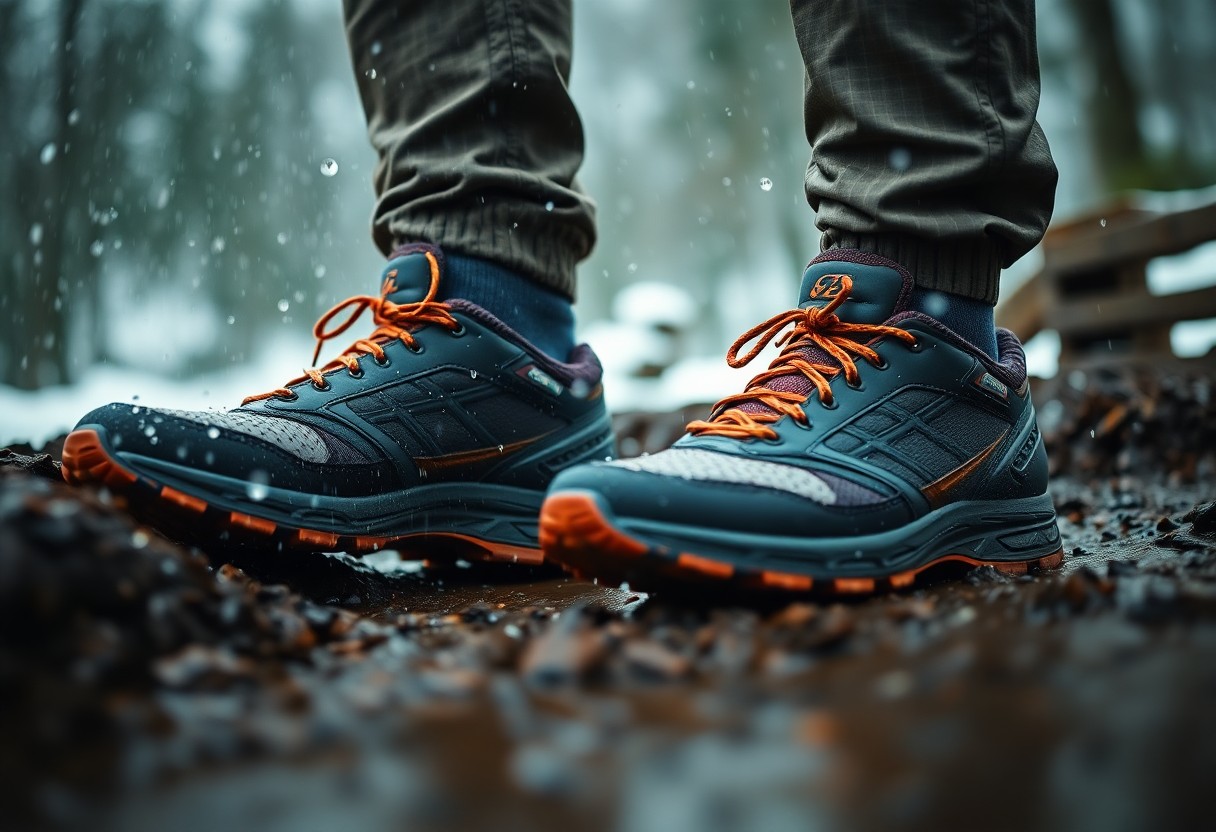
Proven Techniques for Waterproofing Your Xero Shoes
Achieving comprehensive all-weather protection for your Xero Shoes clearly involves a combination of factory options and DIY solutions. Choosing the right method not only enhances waterproofing effectiveness but also helps maintain breathability and comfort throughout your outdoor excursions. Whether you’re encountering light rain or traversing wet terrains, your selection can significantly influence your overall experience.
Evaluating Factory Options Against DIY Solutions
Xero offers factory waterproofing solutions, such as the Denver WP, which features an IPX-7 rating, ensuring you stay dry even when submerged. Alternatively, if you prefer a more bespoke approach, DIY treatments using products like Nikwax can provide approximately 72% waterproofing for non-WP models, offering flexibility tailored to your specific needs.
Thorough Step-by-Step Waterproofing Techniques
The secret to achieving effective waterproofing lies in consistently applying the right techniques. Below are the recommended methods to elevate your waterproofing performance:
Step-by-Step Waterproofing Techniques
| Technique | Description |
|---|---|
| Spray-on Nano-coating | Apply a hydrophobic nano-coating to provide 35-50 wears of protection. |
| Heat-activated Wax | Coat your shoes, requiring reapplication after 300 miles. |
To ensure enduring waterproofing, diligently follow each method step by step. With the spray-on nano-coating, you’ll experience impressive water resistance, while the heat-activated wax extends mileage benefits. Just like sunscreen diminishes over time, these treatments will necessitate regular reapplication to maintain their effectiveness. The ultimate goal is to enhance your outdoor experience without compromising comfort!
Crucial Waterproofing Steps
| Step | Action |
|---|---|
| 1 | Thoroughly clean your shoes. |
| 2 | Choose your preferred waterproofing method. |
| 3 | Evenly apply the treatment across the surface. |
| 4 | Allow to cure according to product instructions. |
By following these steps, achieving optimal waterproofing becomes quite straightforward. Each step enhances your shoes’ longevity and functionality, ensuring they remain effective in varied weather conditions. Be proactive—treat your footwear regularly to keep your feet dry and comfortable.
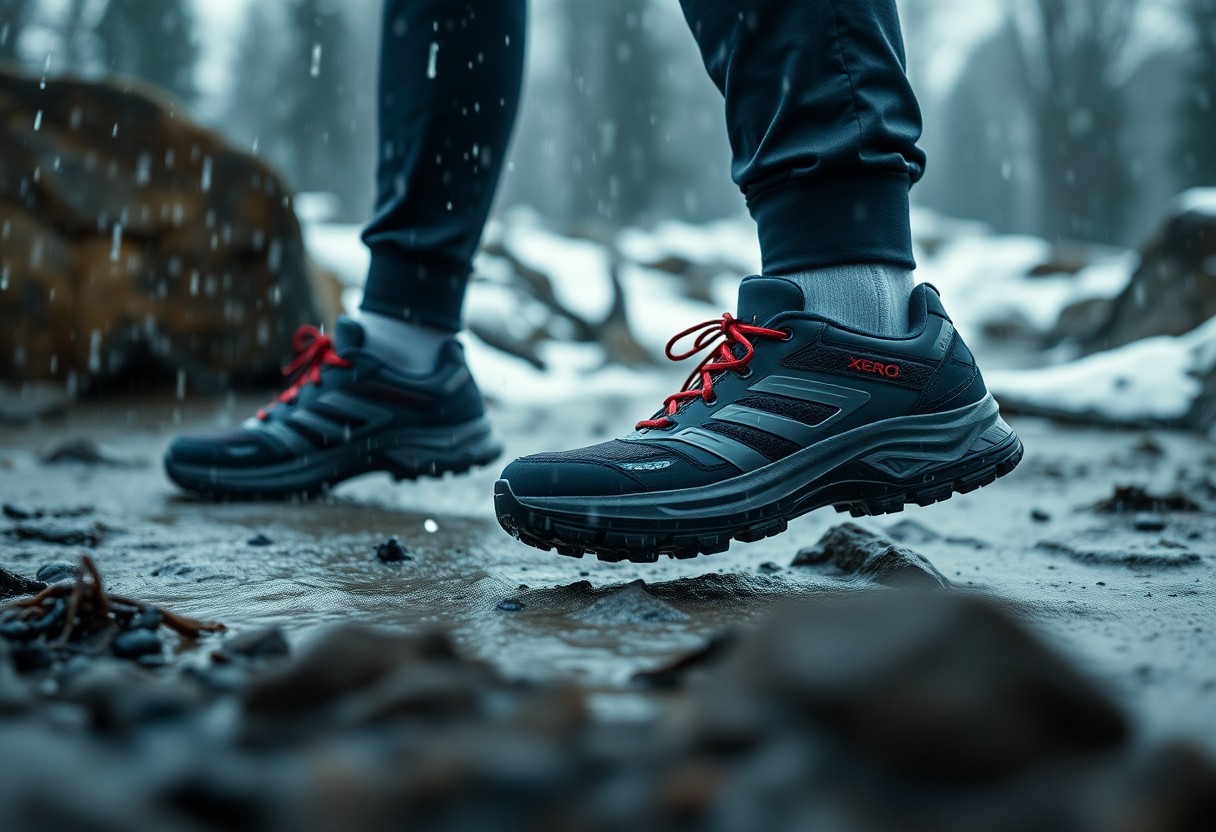
Evaluating the Waterproof Performance of Your Shoes
A crucial aspect of ensuring your Xero Shoes can effectively cope with wet conditions is understanding their waterproof performance. By assessing how materials react to moisture, you can make informed choices regarding the best footwear for your outdoor excursions. This evaluation not only measures how well your shoes repel water but also examines their breathability in various environments.
Techniques for Assessing Waterproofing Effectiveness
When testing waterproofing, several techniques can be utilised, including laboratory evaluations and real-world scenarios. For example, the Denver WP shoes proudly possess an IPX-7 rating, indicating they can withstand immersion in water for up to 30 minutes. User feedback and reviews offer invaluable insights regarding performance in different weather conditions.
Insights from Real-World Performance Assessments
Gaining insights into real-world performance scenarios is vital to understanding how your shoes will function in wet conditions. Xero Shoes equipped with waterproof membranes, like the Denver WP, demonstrate that 86% of users report dry feet during moderate rain. However, some users have noted a slight decrease in ground feel. This information allows you to strike a balance between waterproofing and the natural tactile experience that barefoot shoes are celebrated for.
Moreover, consider the everyday environments where you may encounter rain or puddles, ranging from light drizzles to torrential downpours. Having shoes that maintain flexibility even in temperatures as low as -22°F (-30°C) ensures you can confidently face cold, wet conditions. However, be aware that while waterproof features offer protection, real-world tests indicate that a 10-15% reduction in ground feel might occur due to the waterproof membrane, which may require some adjustments to your walking technique.
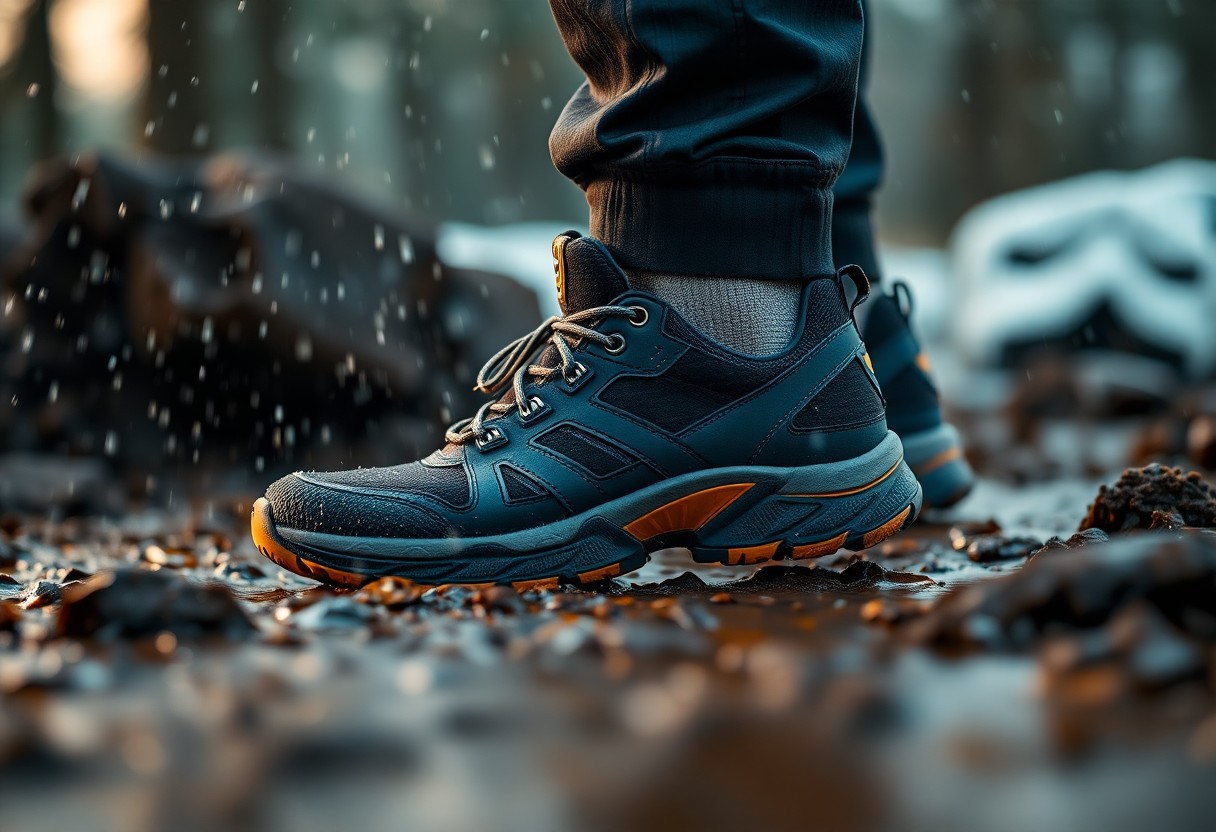
Striking a Balance Between Breathability and Waterproofing
All waterproofing treatments come with inherent trade-offs, particularly concerning breathability. While methods like the Denver WP provide excellent water resistance while maintaining flexibility, the breathability of your footwear can decrease if not applied with care. Achieving the right balance is vital to keeping your feet dry and comfortable during outdoor activities, so invest in treatments that respect this essential feature.
Understanding the Significance of Breathability
Any outdoor enthusiast is aware that breathability is crucial for maintaining comfort, especially during physical exertion. When your shoes are waterproof, the moisture generated from sweating needs to escape; otherwise, you risk ending up with damp feet. This can lead to discomfort and blisters, making it essential to select the right breathable materials and treatments.
Top Strategies for Attaining Optimal Breathable Waterproofing
An effective strategy for achieving optimal breathable waterproofing involves using the right combination of techniques. Start with a spray-on hydrophobic nano-coating that lasts between 35-50 wears, allowing moisture to escape. You might also contemplate applying heat-activated wax treatments, but bear in mind that these require reapplication after 300 miles. Regular maintenance checks will help maintain the balance between insulation and moisture management, resulting in superior performance in wet conditions.
Given the myriad challenges posed by outdoor environments, prioritising your choice of materials in barefoot shoes is crucial. Select footwear designed with integrated waterproof membranes that also provide adequate ventilation, such as the breathable fabric used in the Denver WP, which evacuates 15g of moisture per hour. Your approach to waterproofing should resemble the reapplication of sunscreen; ensure you refresh treatments regularly to maintain both breathability and functionality. This will ultimately contribute to a more enjoyable outdoor experience.
Commonly Asked Questions Regarding Waterproofing Xero Shoes
Ensure the high performance of your Xero Shoes in diverse weather conditions by understanding the technologies behind waterproofing and the maintenance practices required. Many users question the efficacy of specific treatments and how often they should reapply these solutions to guarantee their feet remain dry during outdoor adventures. With proper care, you can enjoy the benefits of waterproofing without compromising comfort or flexibility.
Clearing Up Myths and Misunderstandings Regarding Waterproofing
Contrary to popular belief, waterproof does not equate to completely impermeable. Many waterproof models, including the Denver WP, offer significant moisture protection while still facing certain limitations. Acknowledging that no waterproofing solution is 100% effective in every situation will help set realistic expectations for your Xero Shoes.
Expert Advice for Maintaining Optimal Waterproofing
The best way to sustain the waterproof characteristics of your Xero Shoes is to apply suitable treatments based on your activity level and environmental conditions. Regularly apply a spray-on hydrophobic nano-coating, which lasts between 35-50 wears, especially if you frequently encounter wet conditions. Additionally, consider heat-activated wax treatments every 300 miles to enhance durability. Similar to sunscreen, these treatments require regular reapplication to uphold their effectiveness.
For instance, regular maintenance will ensure your shoes retain their quality and performance over time. By combining various techniques, you can achieve optimal waterproofing results. So, when you’re out in moderate rain, bear in mind that 86% of Denver WP users report dry feet, highlighting the advantages of effective treatments. Staying informed about treatment durations—whether using sprays or wax—will keep your shoes prepared for any outdoor adventure.
Amplifying Your Outdoor Experience Through Proven Waterproofing Techniques
In conclusion, you can greatly enhance your outdoor experience by utilising the correct waterproofing techniques for your Xero Shoes. Implementing options like spray-on hydrophobic coatings or heat-activated wax treatments can dramatically improve your overall all-weather protection. Treat waterproofing like sunscreen—it requires regular reapplication for optimal efficacy. With 86% of users experiencing dry feet during moderate rain and remarkable cold-weather performance down to -22°F, your commitment to addressing waterproofing needs will ensure comfort and protection on every adventure. Embrace these strategies to keep your feet dry and your outings enjoyable.
Thorough FAQ Section on Xero Shoes Waterproofing Techniques (2025)
Q: How does the moisture management of the Denver WP model compare to non-waterproof variants?
A: The Denver WP model excels in moisture management compared to non-waterproof alternatives. It effectively evacuates 15 grams of moisture per hour, significantly outperforming the 28 grams that non-waterproof models manage. This means while both options maintain breathable qualities, the Denver WP offers superior moisture control, making it ideal for wet conditions. Think of this as a sponge that drains excess liquid more effectively, ensuring comfort even in rainy weather.
Q: What are the best practices for applying DIY waterproofing treatments to non-WP models?
A: For those opting for DIY waterproofing treatments, using a product like Nikwax is highly advisable. It provides approximately 72% waterproofing, perfect for enhancing your non-WP shoes. To apply, ensure the shoes are clean and dry, then spray evenly over the exterior, allowing it to absorb. Consider this as akin to applying sunscreen—you want to cover all areas for maximum protection while ensuring it soaks in adequately. Regular reapplication will keep your shoes in optimal condition, particularly after significant exposure to water.
Q: How often should I reapply waterproofing treatments after outdoor activities?
A: The frequency of reapplication depends on the type of treatment used. For a heat-activated wax treatment, it is generally necessary to reapply every 300 miles of use. Spray-on hydrophobic nano-coatings typically last between 35 and 50 wears. Think of this like sunscreen—your skin requires a fresh coat after spending hours in the sun. Monitoring your activities will assist you in determining when it’s time to refresh your shoes’ waterproofing for continued protection against the elements.
The Article Xero Shoes Waterproofing Guide: All-Weather Protection Techniques (2025) appeared first on My Shoes Finder
The Article Waterproofing Xero Shoes: Essential All-Weather Techniques Was Found On https://limitsofstrategy.com
